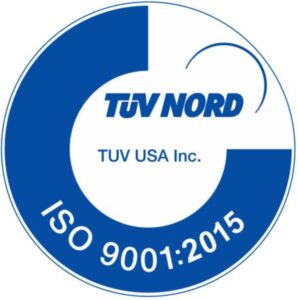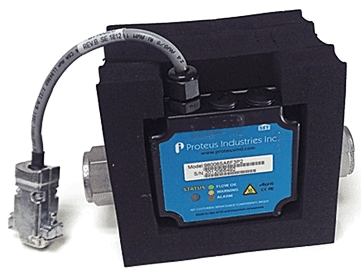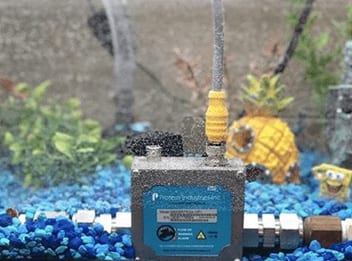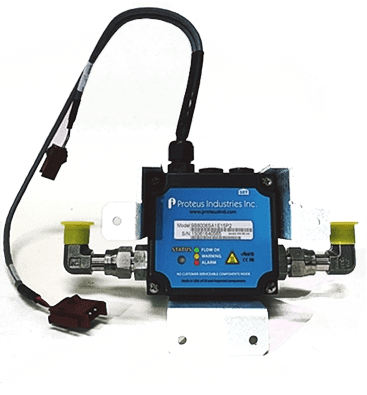Abstract: This paper will address using a safer and less expensive fluid in fluid calibration systems than Standards Fluids. Standards Fluids are typically toxic and extremely costly to fill reservoirs of fluid calibration systems as well as time-consuming to change.

Liquid Flow measuring instruments typically require being calibrated in like conditions as to use for best uncertainty – the fluid properties of viscosity or density are important to replicate. This paper describes using super-heated water and a mixture of water and a water-soluble sweetener to achieve desired viscosities to mimic fluids ranging from refrigerants to heavy crude oils (0.3 cp to 9000+ cp).
Learning Objectives: Learn how to choose and use fluids that are non-toxic, cost effective and match the fluid properties of your end-use fluid. Identify necessary handling techniques from fluid Material Safety Data Sheets and critical properties from fluid data sheets. Determine obstacles that impede using a safe, inexpensive fluid and create solutions to overcome those obstacles. Review and create equations for viscosity and density of super-heated water and glycerin/water mixtures.
1 Fluid
1.1 Fluids are used to transfer heat, lubricate, be energy, and be food, among other things. The desired property of a fluid may be one or more of the following: thermal capacity, viscosity, density, lubricity, compressibility/non-compressibility, flammability/non-flammability, taste, boiling/melting/freezing point, acidity, chemical compatibility, purity, surface tension, cost, toxicity/non-toxicity, solubility/non-solubility, Newtonian/non-Newtonian flow, among other characteristics.
1.2 Drinking water is intrinsically safe to handle but most other fluids are not. Some fluids, such as isopropyl alcohol, are safe to handle in milliliter quantities but not in several liter quantities. In the case of isopropyl alcohol, the fumes from several liters are unhealthy to breathe and are flammable (12.7% by volume in air at 93.7C).
1.3 Standards Fluids are created to have specific viscosity and density properties. These fluids include acetones, for viscosities under 1cp, and oils, for viscosities above 1 cp. Special handling requires gloves, skin and eye protection as well as specific ventilation because Standards Fluids are typically not safe to drink, touch or breathe the fumes of.
1.4 Some fluids are 1000 times more expensive to purchase than water.
1.5 Many fluids are difficult to remove from internal plumbing and equipment and impede future use of the measuring equipment for anything but the single fluid.
2 Material Safety Data Sheets
2.1 Consider a Material Safety Data Sheet (MSDS) to contain the minimum safety precautions for human contact, spill containment, clean up and disposal, flammability (flash point conditions), material compatibility, and so forth.
2.2 Read the MSDS before getting the fluid in order to plan how to handle fluid and appropriateness of environment for fluid. Evaluate the adequacy of the ventilation system to ensure fumes are evacuated from building and not recirculated. Determine the range of the ambient air temperature and humidity conditions, including disaster days. Order appropriate protective apparel (verify the apparel is chemically compatible and non-allergenic) and spill containment apparatus. Check with the appropriate level of government for disposal requirements as well as notification for fire fighters. In the U.S.A., ensure working with fluid does not impact health insurance costs or coverage.
2.3 If a fluid isn’t drinking water, then the fluid requires containment and special disposal per the governmental (local municipality) regulations. Contrary to the MSDS, not all municipalities may have the ability to filter a contaminate fluid.
2.4 Handle every liquid with gloves, including drinking water, to develop a good habit and to determine how protective are the gloves and other apparel.
3 Measurements
3.1 A fluid flow rate instrument’s measurement uncertainty is impacted by one of the fluid properties of viscosity or density.
3.2 Viscosity measurements on bench typically have an order of magnitude better measurement uncertainty versus in-line viscometers. Bench viscosity measurements require a sample removed from source and some apparatus be used to maintain the fluid sample temperature as like the fluid in the calibration flow stand or machine. Some viscometer technologies do not measure viscosity directly.
3.3 In-tank viscosity measurements may have large errors because temperature is not evenly distributed and may not be the same as the in-line fluid temperature.
4 Fluid Substitutes
4.1 Use the application fluid, unless deemed undesirable or impractical for use in the laboratory.
4.2 Substitute fluids are used often because the fluid properties are well understood and suited for general use equipment, such as Standards Fluids, water and water/glycerin mixtures.
4.3 The temperature of the substitute fluid may increase the measurement uncertainty of measurement equipment. Verify that sensing devices for flow rate and other fluid parameters are being operated in the temperature range appropriate to the device calibration.
4.4 Water has a viscosity range of 0.315 cP at 90C to 1.519 cP at 5C and density range of 0.9653 g/cc at 90C to 1.0000 g/cc at 5C. NIST Equation for viscosity of water (cP) is:
4e-12x6 – 2e-99x5 + 3e-7x4 – 2e-5x3 + 0.0014x2 – 0.0599x + 1.7858
NIST Equation for density of water (g/cc) is:
2e-8x3 – 6e-6x2 + 2e-5x + 1
4.5 Glycerin (also known as glycerol or glycerine, chemically known as GLYCEROL with CAS registry No. 56-81-5; NIOSH No. MA8050000, refers to the chemical compound 1,2.3-propanetriol, CH,OHCHOHCH,OH, and to the anhydrous content in a glycerine product or in a formulation [1]) has viscosity range of 0.500 cP at 70C for 10% glycerin/90% to 12070 cP at 0C for 100% glycerin and a density range of 1.00155g/cc at 15C for 1% glycerin/99% water to 1.26415 g/cc at 15C for 100% glycerin [3]. Viscosity curves are best defined using 1% concentration steps between 20C and 30C [4]. A general equation for viscosity of glycerin/water mixtures is presented in a paper by N.S. Cheng [2]. Density equations using Best Fit Straight Line regression can be within 0.11% for a 60% glycerin/40% water mixture using density data from reference [2]. Glycerin is 100% water-soluble. Food grade glycerin (sweetener) is relatively safe to work with [y].
References:
- Glycerine: an overview, The Soap and Detergent Association, New York, New York, 1990, p. 5
- N.E. Dorsey, Properties of Ordinary Water-Substance, Hafner Publishing Co., New York, 1940, p. 184
- Cheng, N. S., “Formula for viscosity of glycerol-water mixture.” Industrial and Engineering Chemistry Research, 47, 3285-3288, School of Civil and Environmental Engineering, Nanyang Technological University, Singapore, 639798, 2008, pp. 1-18
- Handbook of Chemistry and Physics, 20th Ed., Chemical Rubber Publishing Co., Cleveland, OH, 1948, p. 1742
- U.S. Food and Drug Administration, Glycerin; AJirrnation of GRAS Status as a Direct Human Food Ingredient, Federal Register, Vol. 48, No. 27, pp. 5759-60
- Linstrom, P. J.; Mallard, W. G., Thermophysical Properties of Fluid Systems, NIST Standard Reference Database No. 69. In National Institute of Standards and Technology: Gaithersburg MD, https://webbook.nist.gov, 2005.
Speaker/Author: Richard Fertell, Proteus Industries Inc.







